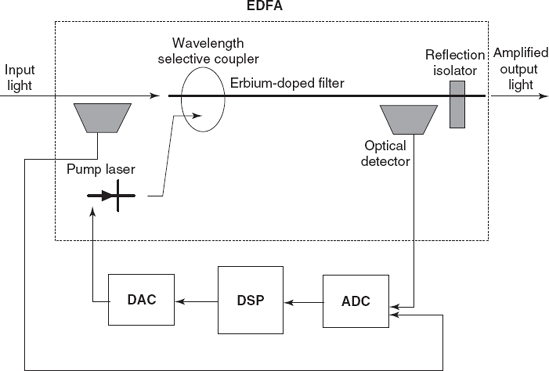2.1. USE OF DIGITAL SIGNAL PROCESSING
Optical communication networks provide a tremendously attractive solution for meeting the ever-increasing bandwidth demands being placed on the world's telecommunication infrastructure. While older technology optical solutions such as SONET require OEO conversions, all-optical network solutions are today a reality. All optical systems are comprised of components such as EDFAs, optical cross-connect (OXC) switches, add-drop multiplexers, variable attenuators, and tunable lasers. Each of these optical devices requires a high-performance control system to regulate quantities such as light wavelength, power output, or signal modulation, as required by that particular device [2].
2.1.1. DSP in Optical Component Control
In general, controlling an optical component requires, at least in part, implementing classical DSP and feedback control algorithms. Examples include Fourier transforms for checking frequency power levels, digital filters for removing signal noise and unwanted frequency bands, and proportional-integral-derivative control (PIDC) or more advanced algorithms such as feedback-adaptive or nonlinear control for regulating power output levels. DSP architectures are specifically designed to implement these algorithms efficiently [2].
Figure 2.1. Feedback power control of an EDFA.

2.1.2. Erbium-Doped Fiber Amplifier Control
Optical amplifiers ...
Get Optical Networking Best Practices Handbook now with the O’Reilly learning platform.
O’Reilly members experience books, live events, courses curated by job role, and more from O’Reilly and nearly 200 top publishers.

